The population ponzi is about to collapse on Victorians.
Victoria has been at the forefront of Australia’s population expansion since the federal government increased immigration intake in the mid-2000s:

Victoria’s population has increased by 2.1 million (46%) this century, reaching 6.8 million people.
According to official forecasts, Victoria’s population would increase to 11.2 million by 2056, with Melbourne’s population expected to reach 9.0 million:
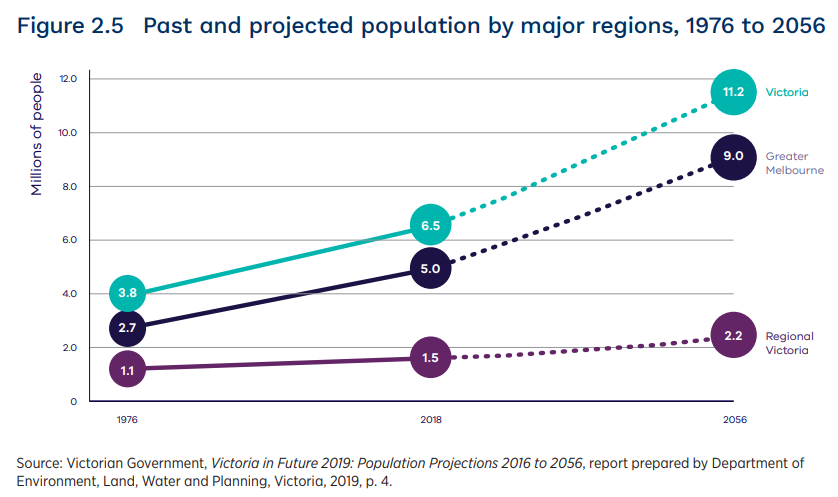
The majority of this population increase will result from net overseas migration:

Victoria’s unprecedented population growth has prompted the state government to undertake a massive infrastructure investment program, which has already pushed the state into severe debt.
Last year, Victoria had the nation’s largest debt load and the worst credit rating:
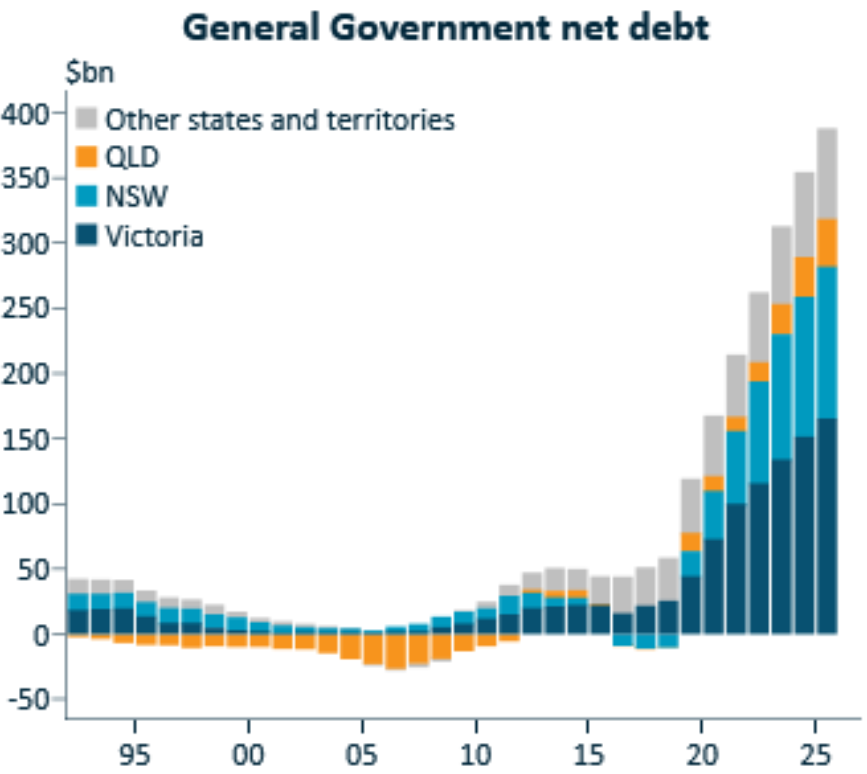
Victoria has the nation’s largest state debt (Source: Alex Joiner).
The December state budget update also projected that Victoria’s debt would reach about $180 billion by 2027:
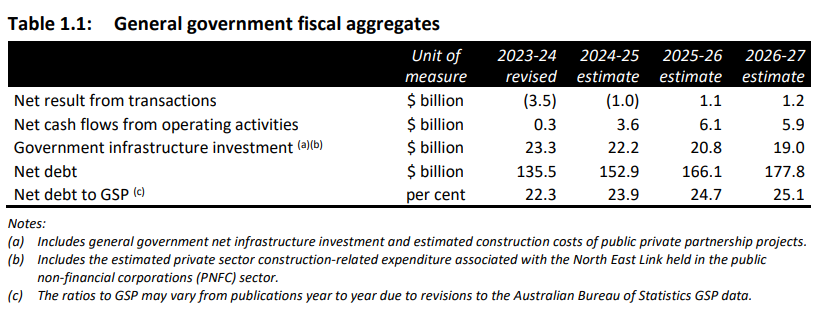
As a result, Victoria’s debt is expected to cost taxpayers $24 million every day in interest, and Victorians will likely face even higher taxes:
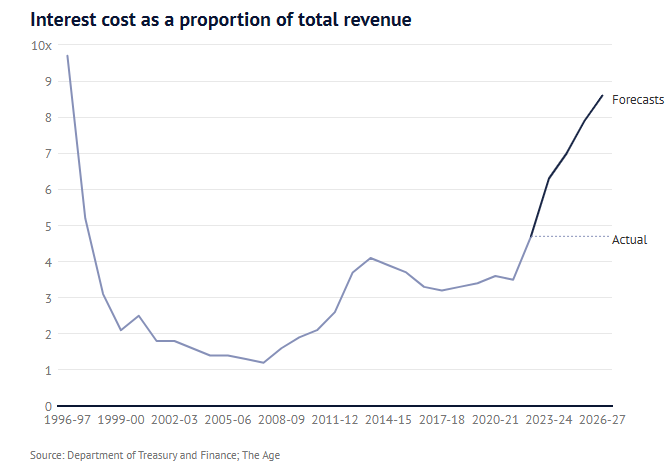
Moody’s is even more pessimistic, projecting that Victoria’s debt will rise by 85% in five years, from $122 billion in 2022 to $226 billion in 2026.
The Victorian Auditor-General also cautioned that the state’s debt may exceed $256 billion by June 2027, questioning why there was no meaningful plan in place to deal with the burden.
Independent economist, Saul Eslake, explained that Victoria’s surging debt has been driven by the state government’s decision to “embark on very big, largely debt-funded infrastructure spending programs”.
“All of those projects have suffered from cost overruns, as big projects almost inevitably do”, Eslake said.
A new analysis by Robert Carling at the Centre for Independent Studies (CIS) shows that Victoria is leading the nation into debt slavery.
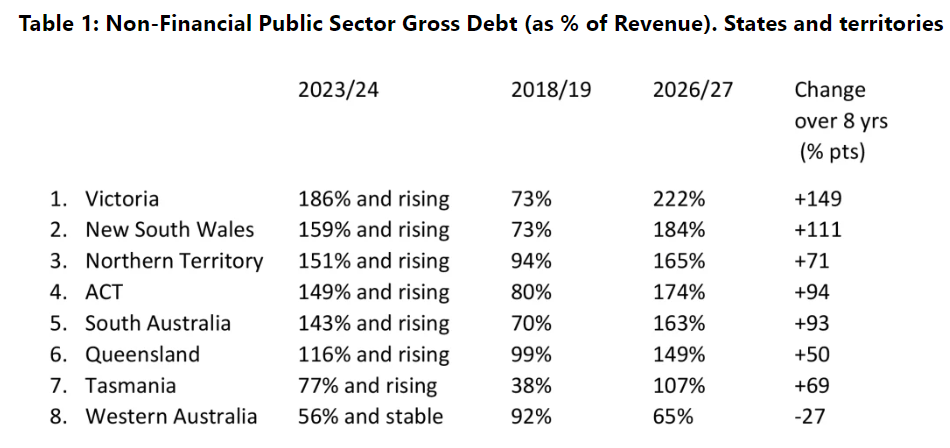
Source: Centre for Independent Studies
“Victoria’s debt ratios were broadly stable until 2019 but have soared since then and are set to rise further”, Carling writes.
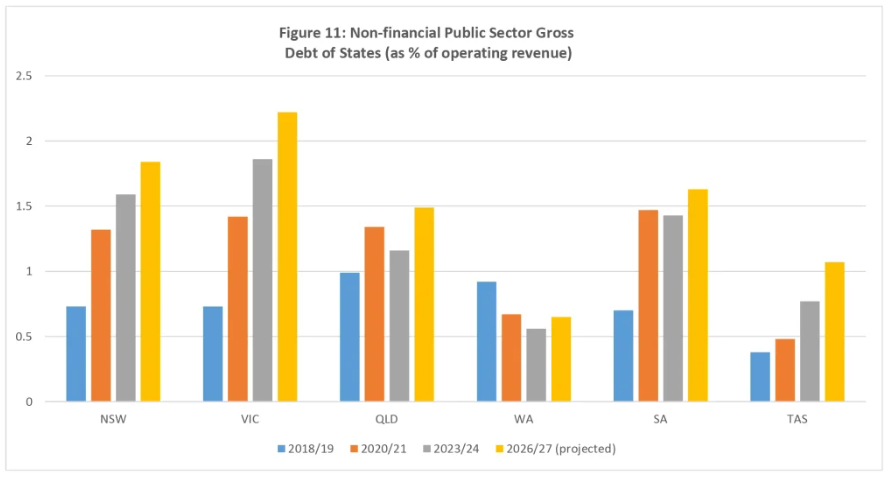
Source: Centre for Independent Studies
“The result is the largest increase to the highest level of any state or territory. The state’s credit rating has been reduced from triple-A to the lowest level of all the states and territories, although it is still investment grade at double-A”.
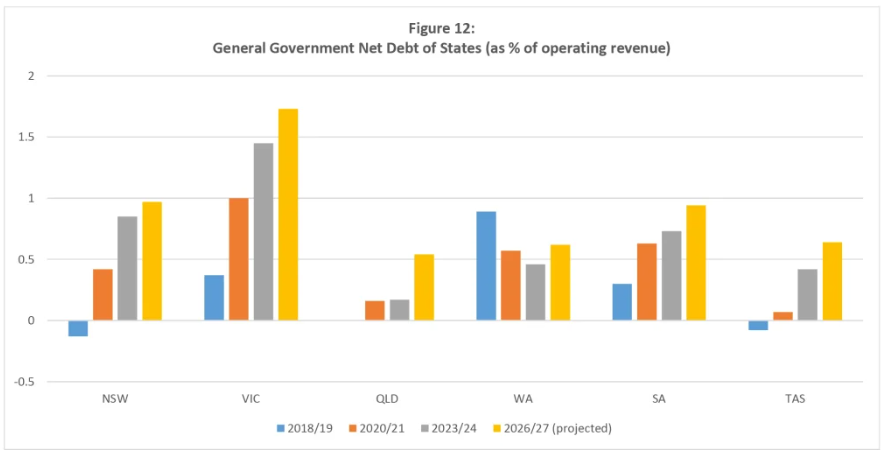
Source: Centre for Independent Studies
“General government operating expenses were growing strongly even before the pandemic, underpinned by the highest rates of increase in public sector employment and payroll among all the states. One-off outlays during the pandemic pushed expenses to exceptionally high levels”.
“Although some moderation is budgeted in 2023/24 and beyond, expenses will remain above the rapid pre-pandemic growth trend line”.
“Infrastructure spending was at moderate levels up to 2016/17 but then expanded rapidly. In the five years to 2021/22 it was more than double the level of the previous five years and another 50% increase is planned for the next five years to 2026/27. Projects have been plagued by cost blow-outs”.

Source: Centre for Independent Studies
“Strong growth of tax revenue up to 2018/19 helped keep debt contained up to then. After a pause during the pandemic, strong revenue growth has returned in the post-pandemic recovery — further boosted by a series of state tax increases — but still falls well short of inflated expenditure, resulting in non-financial public sector gross debt increasing from $54 billion in 2018/19 to $187 billion in 2023/24 and a projected $246 billion three years later”, Carling warns.
The debt situation will only worsen given Premier Jacinta Allan’s silly decision in December to sign the first major contract for former Premier Daniel Andrews’ $200 billion Suburban Rail Loop (SRL).
The decision to sign the SRL contract went against the express advice of infrastructure experts, locking Victorian taxpayers into the most expensive infrastructure project in the state’s history.
““This is really taking a generation’s worth of infrastructure funding and investing it all in one project”, the Grattan Institute’s Transport and Cities program director, Marion Terrill, said when the deal was signed.
To make matters worse, the 10-kilometer North-East Link motorway is now expected to cost taxpayers almost $26 billion, up nearly $16 billion from its original estimate.
This adds $16 billion to the billions previously spent by the Victorian Labor government on other significant projects.
For example, the Metro Tunnel’s construction cost has climbed from $10.9 billion to $14 billion, while the West Gate Tunnel is now expected to cost $10.8 billion, up from $6.7 billion originally.
The vast sums squandered on Labor’s pet infrastructure projects threaten to bury Victorians in crushing debt for generations to come as the state’s population balloons on the back of never-ending mass immigration.
The state’s increasing debt will also leave it short on funds for other critical economic and social infrastructure, such as health care.
And for what purpose? To achieve former Premier Daniel Andrews’ narcissistic infrastructure goals and the federal government’s ‘Big Australia’ obsession?

